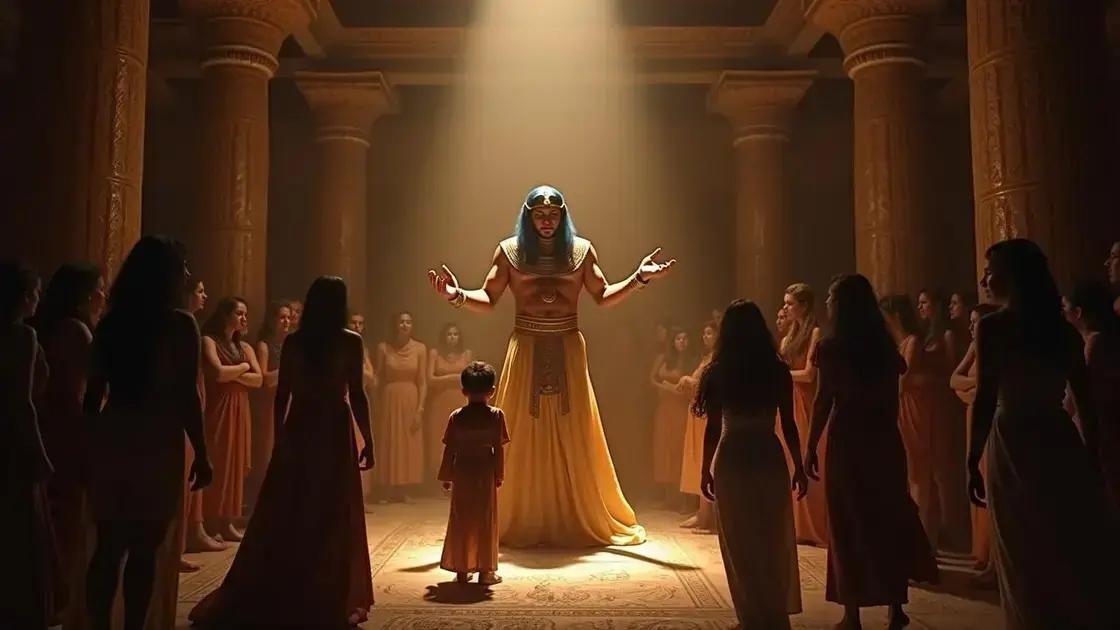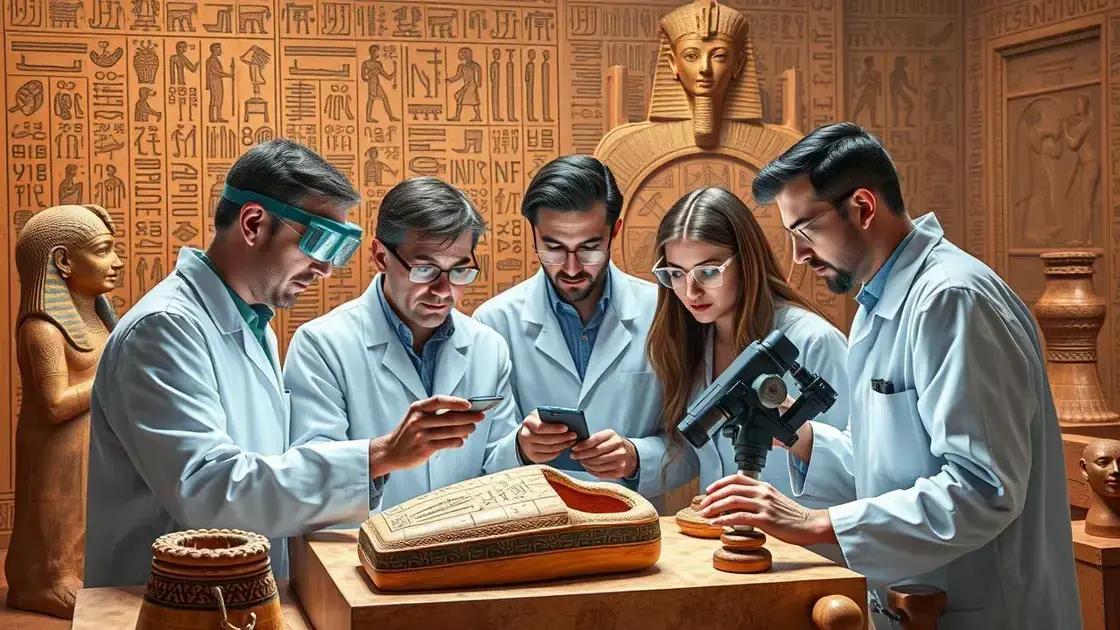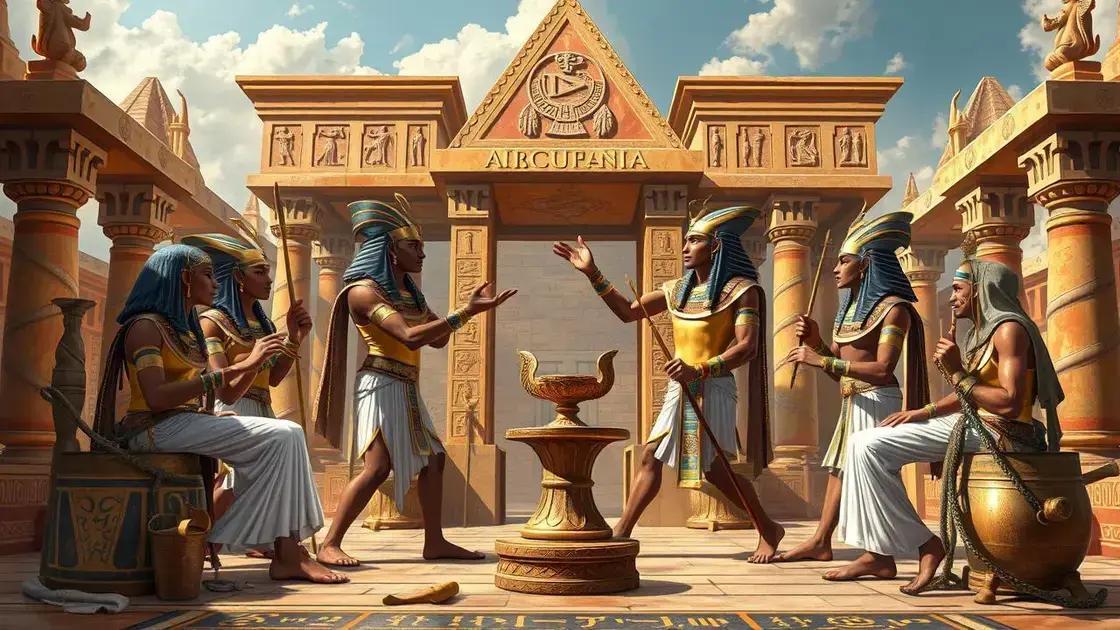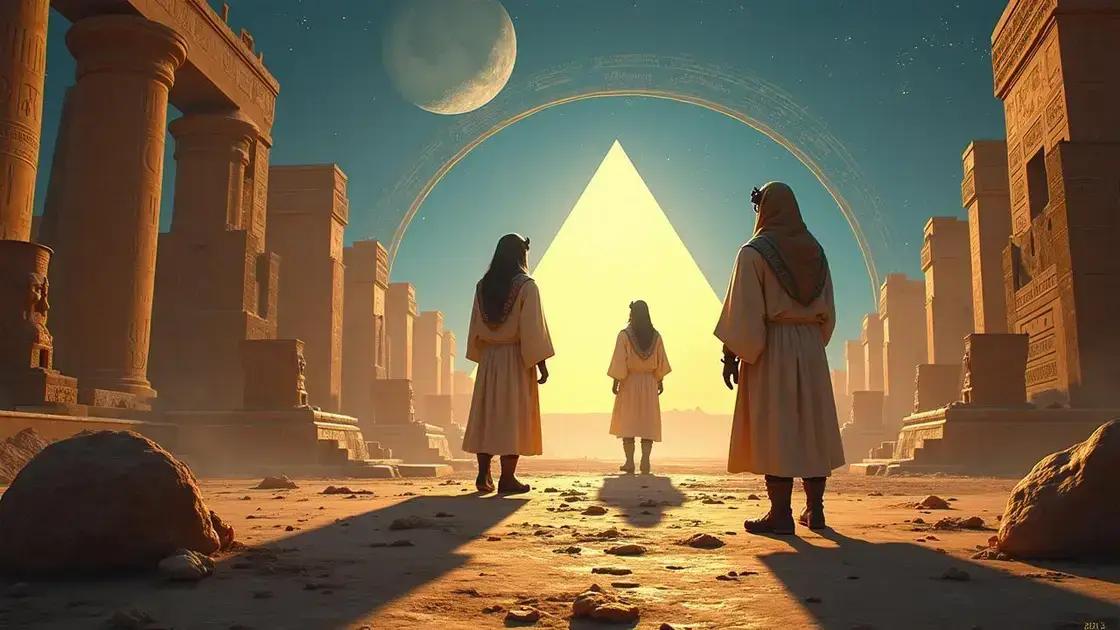The Egyptian Pharaohs employed various tricks, including theatrical illusions and manipulation of light, to reinforce their divine authority and influence society. Modern scientific investigations leverage advanced technologies to uncover the secrets behind these tricks, revealing their cultural impacts and significance in ancient Egypt.
Have you ever wondered about the mysteries surrounding the Egyptian Pharaohs? Specifically, is there scientific evidence for the Trick of the Egyptian Pharaohs? This question has intrigued scholars and enthusiasts alike as they explore the enigmatic practices of ancient Egypt. In this article, we delve into what makes these tricks so captivating, examine scientific investigations into their validity, discuss cultural impacts, and reflect on future research directions.
Introduction to the Egyptian Pharaohs’ Trick

Throughout history, the Egyptian Pharaohs have been regarded as powerful rulers with an aura of mystique. One of the most fascinating aspects of their reigns is the various tricks and techniques they employed to maintain their authority and inspire awe. Understanding these tricks is vital to uncovering how Pharaohs used deception and innovation.
The Nature of Pharaohs’ Tricks
The tricks of the Pharaohs often involved intricate illusions, clever storytelling, and even advancements in technology. These elements worked together to create a sense of the divine among the people. It is believed that some Pharaohs manipulated light and shadows in their grand tombs to give the appearance of supernatural phenomena.
Historical Context
The ancient Egyptians lived in a world full of superstition and belief in the supernatural. The Pharaohs, viewed as gods on Earth, had to ensure their subjects remained in awe and fear of their power. Tricks such as elaborate ceremonies and theatrical displays were not only entertaining but also crucial for maintaining control over the populace.
Merit of the Tricks
Many of the Pharaohs’ tricks served various purposes, from reinforcing social hierarchy to deterring threats. These tricks allowed them to project power and influence both within their kingdom and beyond its borders. By understanding their significance, we can better grasp the internal and external dynamics of ancient Egyptian society.
Modern Interpretations
Today, the legacy of the Pharaohs’ tricks persists in popular culture and academic research. Scientists and historians seek to separate myth from reality, using modern technology to examine ancient artifacts and sites. This exploration opens up avenues for discoveries that were previously unimaginable.
Scientific Investigations into Pharaohs’ Secrets

Scientific investigations into the secrets of the Pharaohs have gained traction in recent years. Researchers aim to uncover the real methods behind their legendary tricks. Using advanced technology, scientists examine artifacts and tombs to uncover hidden truths. This process involves various scientific fields, including archaeology, chemistry, and physics.
Archaeological Studies
One major focus of investigation is the study of ancient tombs. Archaeologists meticulously analyze burial sites to learn how Pharaohs were buried and how their secrets were protected. Excavations reveal fascinating artifacts that provide vital clues about their rituals and beliefs.
Non-Destructive Testing
Non-destructive testing techniques, such as ground-penetrating radar and X-ray imaging, allow researchers to explore the insides of tombs without causing damage. These methods help identify hidden chambers and assess the structural integrity of ancient sites. This information is crucial in understanding the construction techniques used by the Egyptians.
Material Analysis
Scientists also conduct material analysis to determine the substances used in monuments and artifacts. By studying the composition of paints, resins, and other materials, researchers gain insight into the technologies available to the Pharaohs. This analysis sheds light on their rituals and the resources they had access to.
DNA and Mummy Studies
Another remarkable avenue of investigation involves analyzing DNA from mummies. Genetic studies can help unveil the ancestry of the Pharaohs and offer insights into ancient diseases and their health. This research is critical in understanding how these rulers lived and what might have led to their downfall.
Cultural Impacts of the Pharaohs’ Trick

The cultural impacts of the Pharaohs’ tricks were significant and far-reaching. These clever deceptions influenced not only the Egyptian society but also the surrounding regions. The tricks reinforced the idea of the Pharaoh as a divine ruler. This perception shaped many aspects of everyday life, including religion, governance, and art.
Religion and Worship
Many Pharaohs used tricks to present themselves as gods, which encouraged a sense of devotion among their subjects. This belief deeply influenced the religious practices of ancient Egyptians. Rituals and festivals were often designed to showcase the Pharaoh’s power and divine connection, enhancing their status as intermediaries between the gods and the people.
Art and Architecture
Pharaohs’ tricks also manifested in the art and architecture of ancient Egypt. Temples and monuments were constructed to amplify their perceived power. These structures often contained fascinating illusions, such as hidden chambers and deceptive inscriptions. Artists and architects played a crucial role in creating these visual narratives that celebrated and solidified the Pharaohs’ divine status.
Social Hierarchy
The tricks contributed to the social hierarchy within Egypt. By presenting spectacular illusions and dramatic displays, the Pharaohs were able to maintain control over their subjects. The separation of classes was reinforced as lower classes were awed by the Pharaoh’s wealth and power. This dynamic fostered a culture of reverence and fear that kept the social order intact.
Influence on Neighboring Cultures
Furthermore, the cultural impacts of the Pharaohs’ tricks extended beyond Egypt’s borders. Neighboring civilizations were influenced by the myths and legends surrounding the Pharaohs. These stories were passed through trade and conquest, spreading the idea of the divine ruler far and wide.
Conclusions and Future Research Directions

The exploration of the tricks employed by the Egyptian Pharaohs opens doors to numerous opportunities for future research. As new technologies emerge, we can further unravel the mysteries of ancient Egypt. Scientists and historians can collaborate to merge traditional methods with modern techniques.
Technological Advancements
Advancements in imaging technology, such as 3D scanning and virtual reality, enable researchers to explore tombs and artifacts in detail without damaging them. These tools can provide fresh insights into the construction methods and materials used by the Egyptians. Continued application of these technologies will enhance our understanding of their tricks.
Interdisciplinary Approaches
Future research should embrace an interdisciplinary approach. By combining archaeology, anthropology, and even psychology, scholars can analyze why these tricks were effective and how they impacted society. This understanding can reveal the deeper meanings behind their cultural practices.
Public Engagement and Education
Engaging the public through educational programs and exhibitions can also drive interest in this area of research. By sharing findings in accessible formats, we can inspire future generations to explore ancient cultures. This will not only broaden our knowledge but also foster an appreciation for history.
Global Perspectives
Additionally, studying the Pharaohs’ tricks in the context of global history can yield valuable comparisons. Understanding how different cultures utilized tricks and illusions can provide a richer narrative of human creativity. Future researchers should seek to connect ancient Egyptian practices with those in other civilizations.
In Summary: Unraveling the Tricks of the Egyptian Pharaohs
The exploration of the tricks employed by the Egyptian Pharaohs reveals a fascinating blend of ingenuity, artistry, and cultural significance. Through scientific investigations, we uncover the methods behind their illusions and the impacts they had on society.
These practices not only reinforced the Pharaohs’ authority but also shaped religious beliefs, social hierarchies, and artistic expressions. As we look to the future, further research will shed light on the mysteries of ancient Egypt, utilizing advanced technologies and interdisciplinary approaches.
By engaging the public and exploring global perspectives, we can deepen our understanding of the Pharaohs’ tricks and their place in world history. This journey into the past not only honors the creativity of ancient civilizations but also inspires us to innovate in our own time.
FAQ – Frequently Asked Questions about the Tricks of the Egyptian Pharaohs
What were the tricks used by the Egyptian Pharaohs?
The tricks included theatrical displays, illusions, and manipulation of light, all designed to reinforce the Pharaohs’ power and divine status.
How did these tricks influence ancient Egyptian society?
The tricks helped maintain social order, shaped religious practices, and elevated the Pharaohs’ status as god-like figures among the people.
What modern technologies are being used to study Pharaohs’ tricks?
Technologies such as 3D scanning, ground-penetrating radar, and DNA analysis are being used to uncover secrets of ancient Egyptian artifacts and tombs.
Why is it important to study the cultural impacts of these tricks?
Understanding the cultural impacts helps us appreciate the depth of ancient Egyptian civilization and its influence on neighboring cultures and societies.
What future research directions are suggested for studying the Pharaohs’ tricks?
Future research should focus on interdisciplinary approaches, public engagement, and the use of advanced technology to deepen understanding of ancient Egyptian practices.
How can the legacy of the Pharaohs’ tricks benefit modern society?
Their legacy can inspire creativity, innovation, and appreciation for historical cultures, reminding us of the power of storytelling and illusion in human history.












